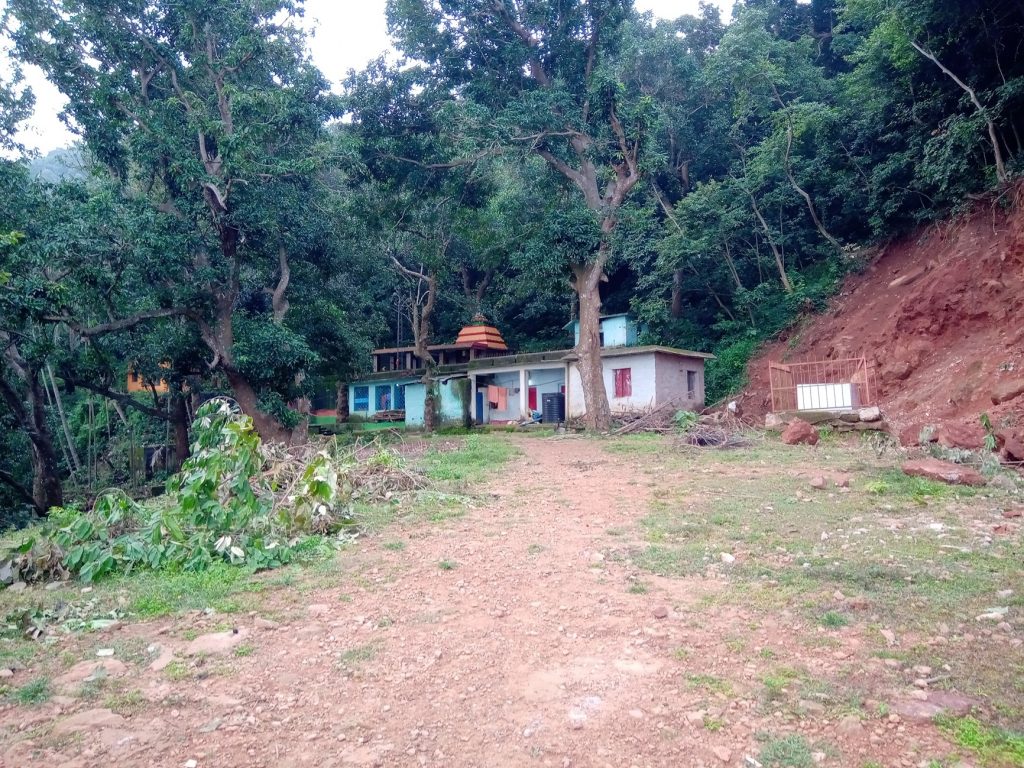The entire surrounding creates an air of serenity. It is a place that evokes spirituality and also freshens minds – the atmosphere is such. Yes we are talking about the Banadurga shrine situated atop the Barunabant hill in Jajpur. Covered by a thick canopy of trees and foliage, the shrine is not always visible, but once one gets there, the picturesque setting simply takes the breath away.
Tourists regularly visit the Mahavinayak temple at Chandikhole, but usually skip the Banadurga shrine fearing the arduous and steep climb. Also the lack of information (there is no plaque or signboard) regarding the shrine prevents people from visiting the site, said some locals and priests.
But then those who finally make it to the hilltop are mesmerised by the entire surroundings.
“The green vista and oxygen-rich air at this place provide a welcome diversion from city life to visitors,” said Adaita Samal, a nature lover.
Adding to the beauty, is a stream which emerges from under the base of the shrine and flows down through thick canopy of trees and bushes.
Locals claim the Banadurga shrine is as old as the Barunabant hill. She is the guardian of the forest and wild animals. Folklore has it that the shrine and the hill have been there since the time of Mahabharata.
Many say that while the Pandavas were in exile, they reached the top of Barunabant hill and found the shrine. They prayed for their safety and left the place. Then for centuries, the shrine remained undiscovered till a sadhu stumbled on it while on pilgrimage to the west.
The story goes that the sadhu dreamt about the presence of Banadurga while he was passing through the area. With the help of the locals, he created a way to the top of the hill and found the shrine. He stayed there for a few days to offer his prayers.
Then in the late 1980s, Golak Chandra Sarangi, ex-sarpanch of Haridaspur panchayat along with Dhara Babam, a ‘nomad’ sadhu, made an effort to develop the area around the shrine. Sarangi sold a part of his property and with the money made a small temple to house the shrine and carved out steps on the hill.
Himansu Pani, a local priest who carries out the daily rituals associated with Banadurga, informed that in the wee hours every day a lot of wild animals can be seen around the temple. “One can find barking deer, wild cats, squirrels, boars, monkeys, porcupines and snakes. However as the day progresses and the place gets crowded, the animals go into hiding,” said Pani.
The hilly stream also has its own importance among the local devotees. They say that drinking the stream water cures many ailments.
Chandrasekhar Jena of Aruha panchayat, who runs a ‘bhog’ shop on the temple premises, said devotees who make the arduous trek to the top always have their wishes fulfilled and Banadurga never disappoints them.
Chandrasekhar also pointed out that the shrine failed to gain popularity like the Maa Chandi temple and Siddhivinayak shrine in Jajpur district as it had remained inaccessible for a lengthy period. “Devotees found it extremely difficult to reach the hilltop. Hence, the shrine did not have many visitors,” he said.
“The situation, however, is about to change now as the government has started building a concrete road to the top of the hill. Once completed two-wheelers and four-wheelers can easily go up to the hilltop,” added Chandrasekhar. He is hoping that with the influx of tourists, the locality will see other developments too.
The place is a favourite selfie spot for many, said Satujit Biswal, a college student.
Others also had a point to make. “Earlier, there was rampant hunting of wild animals. However, now with the implementation of the Wildlife Protection Act, the animals are safe and increasing in numbers. It is a nature’s treasure trove,” opined teacher Dhirendra Muduli, and villager Ankur Rout.
Himansu Rout, OP
